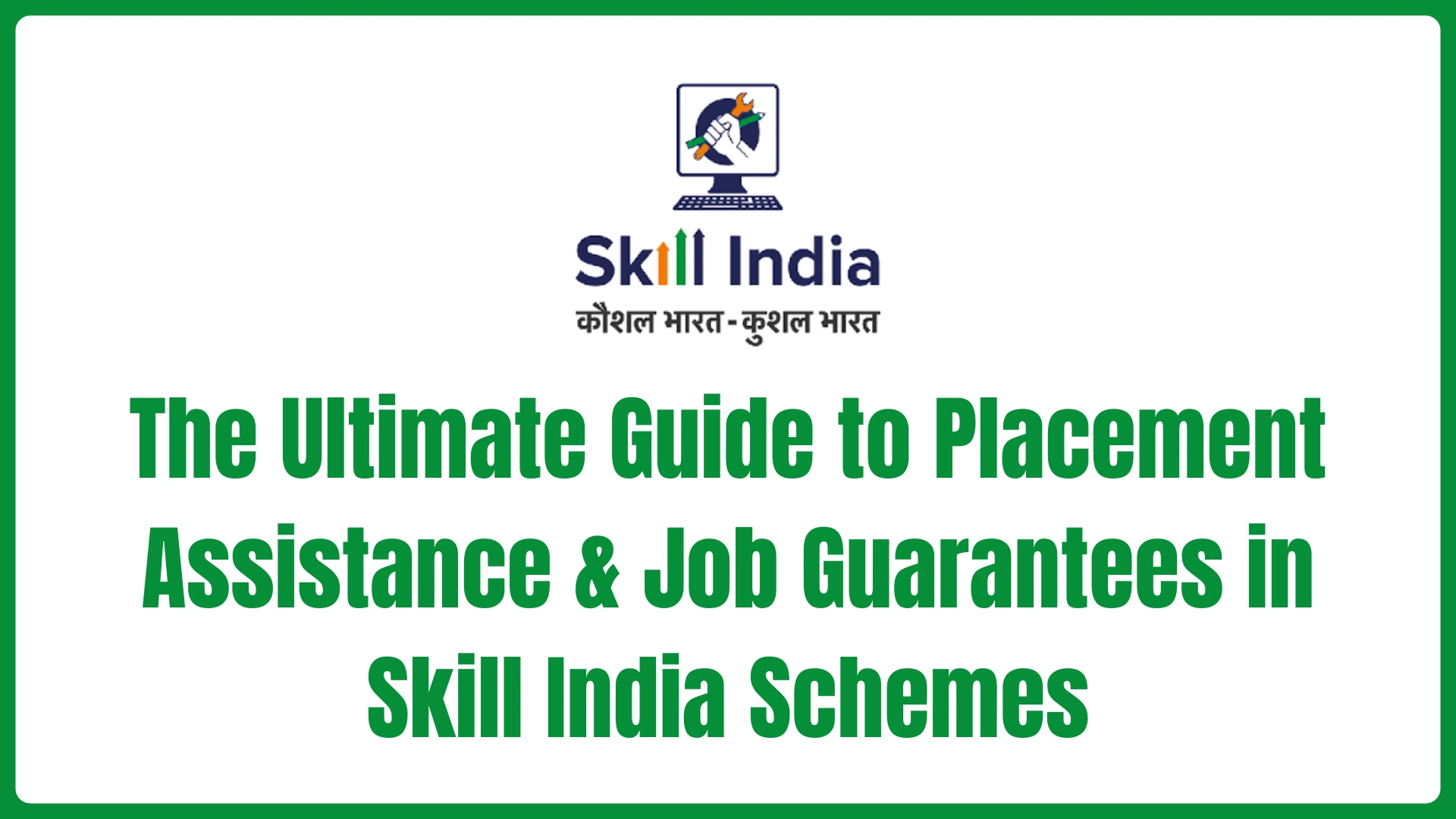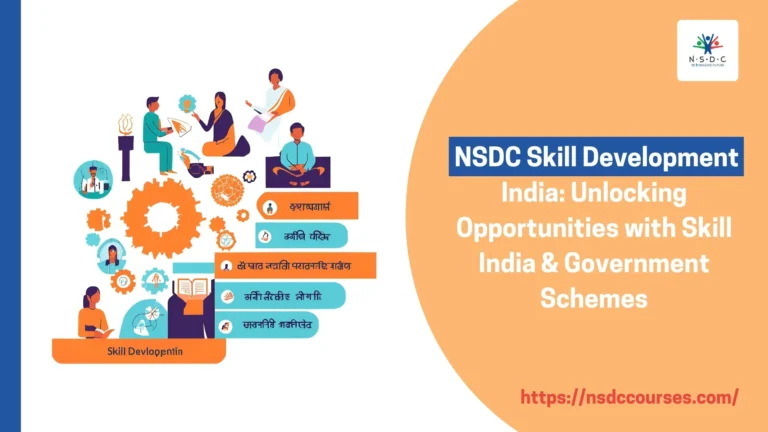The Ultimate Guide to Placement Assistance & Job Guarantees in Skill India Schemes
Introduction: From Training to Employment – Bridging the Last Mile
Completing a skill development course is a significant achievement, but the ultimate goal for most learners is securing gainful employment. Recognizing this critical need, the Government of India’s Skill India Mission has embedded robust placement assistance mechanisms within its flagship schemes. This strategic focus ensures that the journey doesn’t end with certification but continues seamlessly into a job or entrepreneurial venture.
This pillar page is your comprehensive guide to understanding and leveraging the placement assistance ecosystem. We will demystify how schemes like Pradhan Mantri Kaushal Vikas Yojana (PMKVY) facilitate connections between trained candidates and employers. You will learn how to find genuine job training and placement near me, understand the role of training partners, and access crucial documents like the National Trade Certificate (NTC) and National Apprenticeship Certificate (NAC) that are key to unlocking job opportunities.
1. What is Placement Assistance? The Promise of Skill India
Placement assistance is a structured support service provided by training partners and government bodies to help certified candidates secure employment. It is a core component of schemes like PMKVY, which often have placement targets. This is not a guaranteed job promise but a facilitated process that includes:
- Job Fairs (Rozgar Melas): Organizing events where multiple employers meet and interview batches of trained candidates.
- Profile Referral: Sharing candidate profiles and databases with empaneled industry partners.
- Interview Coordination: Scheduling interviews between candidates and companies.
- Post-Placement Tracking: Following up with both the candidate and the employer for a few months to ensure job retention.
This system is designed to bridge the gap between the skilled workforce and industry demand, ensuring that the skill development initiative translates into tangible economic benefits for the youth.
2. How Placement Assistance Works: The Ecosystem Explained
2.1. The Role of Training Partners (TPs) in Job Placements
Training Partners (TPs) are the backbone of the Skill India ecosystem. These are organizations (NGOs, companies, ITIs, etc.) approved by the National Skill Development Corporation (NSDC) or other government agencies to deliver training courses.
Their responsibilities extend beyond teaching:
- Industry Linkages: A reputable training provider maintains strong connections with local and national industries to understand their hiring needs.
- Placement Cells: Most TPs have a dedicated placement cell that works exclusively to secure jobs for their graduates.
- Career Counseling: They guide candidates on resume building, interview skills, and professional etiquette.
- Meeting Placement Targets: Under PMKVY, TPs are incentivized based on successful placements, making it in their direct interest to find you a job.
When searching for job training and placement near me, choosing a TP with a proven high placement record is crucial.
2.2. Key Portals and Platforms for Connecting Candidates and Employers
The government has launched digital platforms to automate and streamline the placement process:
- Skill India Portal (www.skillindia.gov.in): Features a candidate dashboard where you can update your profile, making it visible to potential employers.
- ASEEM Portal (Atmanirbhar Skilled Employee Employer Mapping): Aims to bridge the demand-supply gap by mapping skilled workers based on geographic and industry-wise demand. It’s a powerful AI-based platform for placement assistance.
3. Finding Opportunities: Job Training and Placement Near Me
3.1. Using the Skill India Portal to Find Placement-Centric Courses
- Visit the Portal: Go to the official Skill India website.
- Find a Course: Use the “Find a Course” or “Find a Training Centre” feature.
- Apply Filters: Filter your search by location (e.g., “near me”), sector, and job role.
- Research TPs: Before enrolling, research the training partner. Check their placement statistics and reviews. A good TP will be transparent about their placement record.
3.2. Locating a Reputable Placement Centre Near You
While many TPs have in-house placement cells, there are also dedicated placement centres.
- Government ITIs: Most Industrial Training Institutes have robust placement cells that coordinate with industry for their students.
- NSDC Hub Offices: Can provide guidance on placement opportunities.
- Online Search: Use search terms like “placement centre near me” or “placement center near me” to find local agencies. However, always verify their credibility by checking if they are affiliated with government schemes.
4. The Certificates That Open Doors: Downloading Your NTC and NAC
Your certificate is your passport to employment. It is a government-recognized, NSQF-aligned proof of your competency.
4.1. What is a National Trade Certificate (NTC)? The ITI Pass Certificate
The National Trade Certificate (NTC), often called the ITI pass certificate or ITI trade certificate, is awarded to candidates who successfully complete their training from a government or private Industrial Training Institute (ITI).
- It is issued by the National Council for Vocational Training (NCVT).
- It is also known as the NCVT Certificate or ITI NTC Certificate.
- This is a crucial document for applying to jobs in both government and private sectors.
4.2. What is a National Apprenticeship Certificate (NAC)?
The National Apprenticeship Certificate (NAC) is awarded to apprentices who have successfully completed their apprenticeship training under the Apprentices Act, 1961.
- It is issued by the Board of Practical Training (BOPT).
- The apprenticeship certificate validates that you have gained practical, on-the-job experience, making you highly valuable to employers.
4.3. Step-by-Step Guide: National Trade Certificate Download & Apprentice Certificate Download
For NTC / ITI Certificate Download:
- Visit the official NCVT MIS portal (ncvtmis.gov.in).
- Click on “Student/Passout” and then on “Download Certificate.”
- Enter your ITI roll number and year of passing.
- Your ITI certificate PDF will be displayed. You can download and print it. This process is for the provisional national trade certificate and the final certificate.
For NAC / Apprenticeship Certificate Download:
- Visit the respective portal (e.g., the apprenticeship portal for your region or the BOPT portal).
- Log in using your credentials provided during your apprenticeship.
- Navigate to the certificate section to download apprenticeship certificate.
- You can also download your apprentice marksheet from the same portal.
If you face issues, you should contact your ITI or the apprenticeship advisor at your training establishment.
5. For Training Providers: How to Become a Skill India Training Partner
5.1. Skill India Training Partner Registration Process (TP Registration)
Organizations looking to contribute to the skilling mission can apply to become a training partner.
- Eligibility Check: The organization must meet the criteria set by NSDC/DGT, including infrastructure, trainer qualifications, and past experience.
- Expression of Interest (EoI): Respond to an EoI floated by NSDC for specific sectors or geographies.
- Submit Proposal: Submit a detailed proposal through the TP registration portal on the NSDC or Skill India website.
- Due Diligence: NSDC conducts a thorough due diligence process.
- Agreement: Upon successful selection, a agreement is signed, making the organization an approved training partner.
5.2. How to Get an NSDC Certificate for Training Providers
The NSDC certificate for a TP is not a physical certificate but the formal approval and empanelment letter received after successful TP registration. This approval allows them to run government-funded skilling programs and issue government-recognized certificates to candidates.
6. Maximizing Your Success: A Candidate’s Checklist for Placement
- Choose Wisely: Select a course with high industry demand and a TP with a strong placement record.
- Excel in Training: Focus on learning both practical and soft skills.
- Get Certified: Ensure you complete the course and download your certificate immediately.
- Be Proactive: Engage with your TP’s placement cell. Update your profile on the Skill India and ASEEM portals.
- Prepare for Interviews: Practice and participate in all job fairs organized by your center.
7. Beyond Placement: Entrepreneurship and Career Growth
Remember, placement assistance is one path. Many schemes also offer support for entrepreneurship. If you have an business idea, explore entrepreneurship development programs that provide mentorship, market linkages, and access to credit, turning you from a job-seeker into a job-creator.
6. Maximizing Your Success: A Candidate’s Checklist for Placement
Securing a job through placement assistance requires active participation from the candidate. Here is a practical checklist to ensure you are fully prepared to leverage the opportunities provided:
- 1. Choose Your Course and TP Wisely: Before enrollment, research extensively. Don’t just look for training and placement near me; look for the best. Scrutinize the training partner’s website, ask for their official placement records, and read reviews. Choose a course aligned with your interests and high-growth industries.
- 2. Excel in Both Theory and Practicals: Your performance during training is the foundation of your employability. Strive for excellence in both classroom learning and hands-on practical sessions. A strong grasp of fundamentals will shine through in interviews and technical tests.
- 3. Master Soft Skills: Technical skills get you an interview; soft skills get you the job. Actively work on your communication, teamwork, problem-solving, and time management. Participate in any soft skills or personality development sessions offered by your training provider.
- 4. Build a Professional Resume: Work with your placement cell to create a crisp, one-page resume. Highlight your certification (NTC, NAC, PMKVY certificate), technical skills, and any projects completed during training. Tailor it for the job role you are applying for.
- 5. Ensure Your Certification is Ready: Upon course completion, immediately complete the national trade certificate download or apprentice certificate download process. Have digital and physical copies ready. Employers will often ask for this during the application process.
- 6. Be Proactive and Engaged: Don’t wait for opportunities to come to you. Regularly interact with your placement officer. Update your profile on the Skill India Portal and ASEEM portal with your new certification details. A complete and updated online profile increases your visibility to employers.
- 7. Prepare Diligently for Interviews: Research companies attending the Rozgar Mela. Prepare answers for common interview questions and have a set of questions ready to ask the interviewer. Practice for any technical tests that might be required.
- 8. Present Professionally: First impressions matter. Dress professionally for interviews and job fairs. Punctuality and a positive attitude are non-negotiable.
- 9. Gather Feedback: If you aren’t successful in an interview, politely ask for feedback. This is invaluable for improving your performance next time.
- 10. Follow Up: After an interview, send a thank-you email to the interviewer, reiterating your interest in the position. This demonstrates professionalism and keenness.
By following this checklist, you transition from a passive beneficiary of placement assistance to an active driver of your own career success.
7. Beyond Placement: Entrepreneurship and Career Growth
The goal of skilling is not just to create job seekers but also to empower job creators and foster long-term career growth.
Entrepreneurship: Becoming Your Own Boss
For those with an entrepreneurial spirit, the skilling ecosystem provides a launchpad:
- Integration in Curricula: Many skill development courses, especially in sectors like Beauty & Wellness, Retail, and Electronics, include modules on entrepreneurship development. This teaches you how to start and manage your own business.
- Access to Credit: Your NSQF-aligned certificate can be used to apply for loans under schemes like the Pradhan Mantri Mudra Yojana (PMMY). Banks often view government-certified skills as a positive factor when evaluating loan applications for micro-enterprises.
- Startup India Linkages: Training centers often connect aspiring entrepreneurs with broader initiatives like Startup India, which offers networking, mentorship, and incubation opportunities.
Career Growth: The Pathway of Lifelong Learning
Your first job is a beginning, not an end. The philosophy of Skill India is built on lifelong learning:
- Upskilling and Reskilling: The industry evolves rapidly. Use your initial job experience to identify skills you need to learn next. Return to the ecosystem for advanced job training to move into supervisory roles (e.g., NSQF Level 5-7 courses).
- Apprenticeship Pathway: If you joined through a short-term course, consider entering a formal apprenticeship to gain deeper, hands-on experience, which leads to the highly valued National Apprenticeship Certificate (NAC).
- Recognizing Prior Learning (RPL): If you have been working for years without a formal certificate, explore RPL schemes under PMKVY. This certifies your existing skills, boosts your credibility, and opens doors to better-paying jobs and promotions.
Conclusion: Your Career, Your Responsibility – empowered by Skill India
The government skill development schemes have created a powerful infrastructure for placement assistance. From the network of training partners and the digital prowess of the ASEEM portal to the industry validity of the National Trade Certificate, every piece is designed to connect your newly acquired skills to a fulfilling career.
However, the system works best for those who engage with it proactively. Your journey involves making informed choices—selecting the right training and placement centre near you, excelling in your course, and actively participating in the placement process. Remember, these schemes provide the ladder, but you must take the steps to climb it.
By leveraging this support system effectively, you are not just finding a job; you are building a sustainable, growing career in the modern Indian economy. The door to opportunity is open; step through it with confidence.
Disclaimer: While every effort is made to provide accurate and up-to-date information, specific processes, websites, and schemes are subject to change by the governing authorities. Readers are advised to always refer to the official Skill India, NSDC, NCVT, and DGT portals for the most current information and guidelines.







